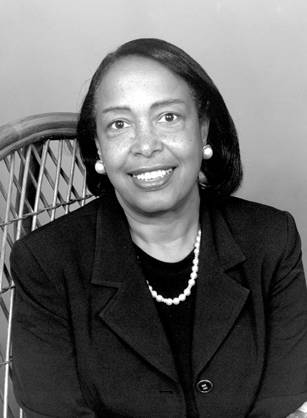
Women History Month
“Valiant Women of the Vote.” The theme honors “the brave women who fought to win suffrage rights for women and for the women who continue to fight for the voting rights of others.” . . .
Patricia Era Bath (November 4, 1942 – May 30, 2019) was an American ophthalmologist, inventor, humanitarian, and academic. She was an early pioneer of laser cataract surgery.
She was the first woman to lead a post-graduate training program in ophthalmology and the first woman elected to the honorary staff of the UCLA Medical Center.
Dr. Bath was the first Black person to serve as a resident in ophthalmology at New York University. She was also the first Black woman to serve on staff as a surgeon at the UCLA Medical Center.
She was the first Black woman doctor to receive a patent for a medical purpose. The holder of five patents, she also founded the non-profit American Institute for the Prevention of Blindness in Washington, D.C.
Dr. Bath was the first Black woman to complete a residency in ophthalmology in 1973. Two years later, she became the first female faculty member in the Department of Ophthalmology at UCLA’s Jules Stein Eye Institute.
In 1976, Dr. Bath co-founded the American Institute for the Prevention of Blindness, which established that “eyesight is a basic human right.”
In 1986, Dr. Bath invented the Laserphaco Probe, improving treatment for cataract patients. She patented the device in 1988, becoming the first Black female doctor to receive a medical patent.
Dr. Bath was born in New York City’s Harlem neighborhood to Rupert Bath; he was the first Black motorman for the New York City subway system, and Gladys Bath, a housewife and domestic worker who used her salary to save money for her children’s education.
She was encouraged by her family to pursue academic interests. Her father, a former Merchant Marine and an occasional newspaper columnist, taught Dr. Bath about the wonders of travel and the value of exploring new cultures. Her mother piqued the young girl’s interest in science by buying her a chemistry set.
Patricia and her brother attended Charles Evans Hughes High School where both students excelled in science and math. Patricia was inspired by her teachers to pursue research.
Inspired by Albert Schweitzer‘s work in medicine, Bath applied for and won a National Science Foundation Scholarship while attending high school; this led her to a research project at Yeshiva University and Harlem Hospital Center studying connections between cancer, nutrition, and stress. The head of the research program realized the significance of her findings and published them in a scientific paper. In 1960, still a teenager, Bath won the “Merit Award” of Mademoiselle Magazine for her contribution to the project.
Bath received her Bachelor of Arts in chemistry from Manhattan’s Hunter College in 1964 and relocated to Washington, D.C. to attend Howard University College of Medicine. Her freshman year at Howard coincided with the Civil Rights Act of 1964.
She co-founded the Student National Medical Association and became its first woman president in 1965.
At Howard, she was awarded a Children’s Bureau National Government Fellowship Award to do research in Belgrade, Yugoslavia, in the summer of 1967. The highlight of the award ceremony was the meeting of Earl Warren, chief justice of the United States Supreme Court, at the US Embassy in Belgrade.
Bath graduated with honors from Howard University College of Medicine in 1968. She was awarded the Edwin Watson Prize for Excellence in Ophthalmology by her mentor, Lois A. Young.
The assassination of Martin Luther King Jr. in 1968 caused Bath to dedicate herself to achieving one of the dreams of King, namely the empowerment of people through the Poor People’s Campaign. She organized and led Howard University medical students in providing volunteer health care services to the Poor People’s Campaign in Resurrection City in the summer of 1968.
Bath returned to her Harlem community and interned at Harlem Hospital Center. During her internship, she observed large proportions of blind patients at Harlem Hospital in comparison to patients at the Columbia University Eye Clinic.
Prior to beginning her ophthalmology residency study at NYU in 1970, she was awarded a one-year fellowship from Columbia University to study and contribute to eye care services at Harlem Hospital. She began to collect data on blindness and visual impairment at Harlem Hospital, which did not have any ophthalmologists on staff.
Her data and passion for improvement persuaded her professors from Columbia to operate on blind patients, without charge, at Harlem Hospital Center, which had not previously offered eye surgery. Bath was proud to be on the Columbia team that performed the first eye surgery at Harlem Hospital in November 1969.
She served her residency in ophthalmology at New York University, from 1970 to 1973, the first Black person to do so.








